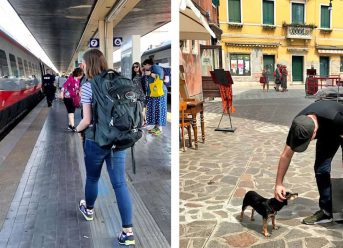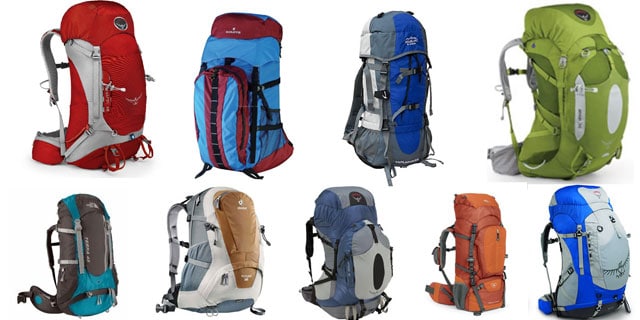
The first thing you need to backpack through Europe is a backpack—shocking, I know.
Choosing the right backpack for Europe can be confusing and time intensive but spending a little time finding the right bag will pay off in the long run. That’s because a properly fitting backpack is comfortable and allows you to travel swiftly and easily but a poor-fitting pack is like an anchor.
This guide will explain the different styles of travel backpacks available and how to choose the perfect one for you.
Travel Backpack Styles and Options
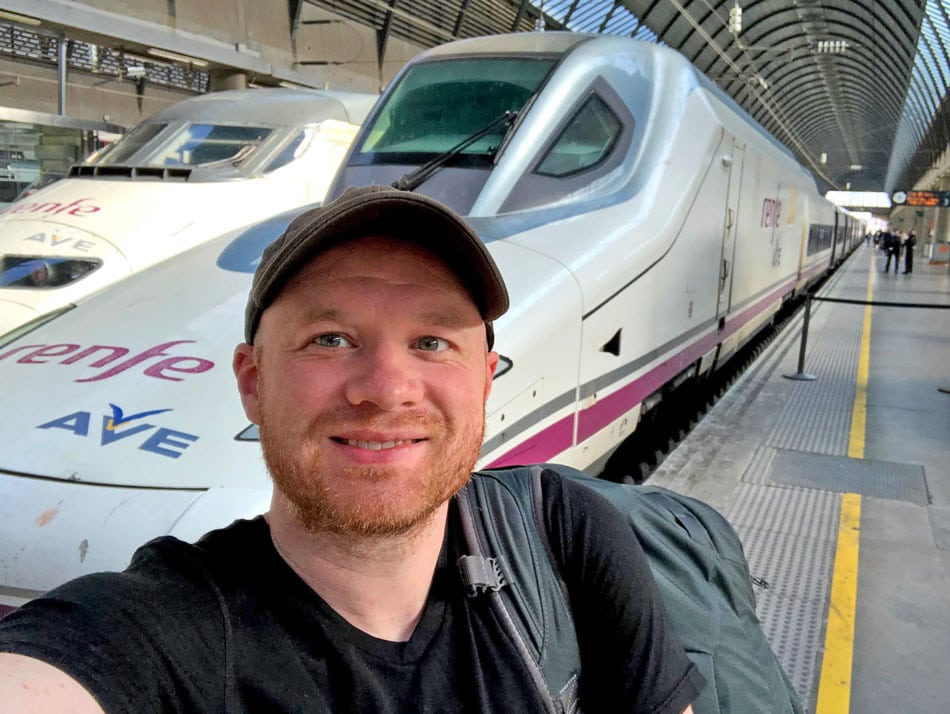
Read about the best travel backpacks for Europe once you’ve decided what style of backpack you want.
But First… Why Travel With A Backpack?
A backpack is a great choice for many travelers because it allows you to be highly mobile while on the road.
On the other hand, traditional suitcases and duffle bags can be inconvenient because they’re difficult to carry long distances. Wheeled suitcases aren’t well suited for Europe’s crowded streets, narrow train aisles, stairs, and cobblestones.
There are two main styles of travel backpacks — top-loading and front-loading.
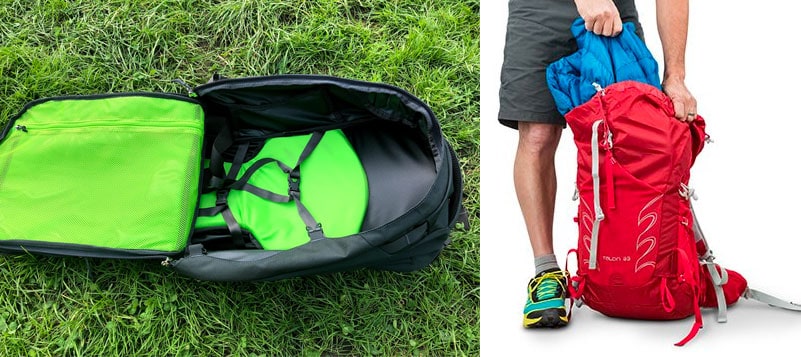
Top-Loading Backpacks
Top-loading backpacks have a single opening at the top that is closed by a drawstring and covered by a protective flap. These bags were originally designed for mountain/backcountry hikers, but many European travelers also use them.
Benefits of Top-Loading Backpacks
- No Zippers For Main Compartment: You can stuff a lot of stuff in your backpack without worrying about breaking a zipper.
- More Waterproof: The top closure means there is less chance of water getting into the bag.
- Lightweight: Top-loading packs tend to be lighter weight.
- Better Fit: These bags are slimmer and tend to fit better. They fit closer to the body and feel more natural.
- Good Support: The support systems are more advanced in top-loading bags because they were designed for long treks by serious backpackers. These bags are designed to be worn for hours at a time.
Negatives of Top-Loading Backpacks
- Difficult To Pack/Unpack: Since everything is loaded from the top, you basically have to take everything out of the bag to access your stuff. This can be somewhat alleviated if you pack your bag in a specific manner but it is still a hassle.
- Lots of Straps: These hiking-style backpacks have a lot of straps that can easily get caught and ripped off in the conveyor belts at the airport if you ever need to check your backpack.
- Less Secure: The top of the pack is closed via a drawstring, so it is a bit easier to gain access than compared to the front-loading style which can have its zippers locked.
- No Laptop Compartment: Most hiking-style backpacks aren’t built to hold a laptop if you’re planning in traveling with a laptop.
My favorite top-loading backpack is the Osprey Atmos.
Front-Loading (Panel Loading) Backpacks
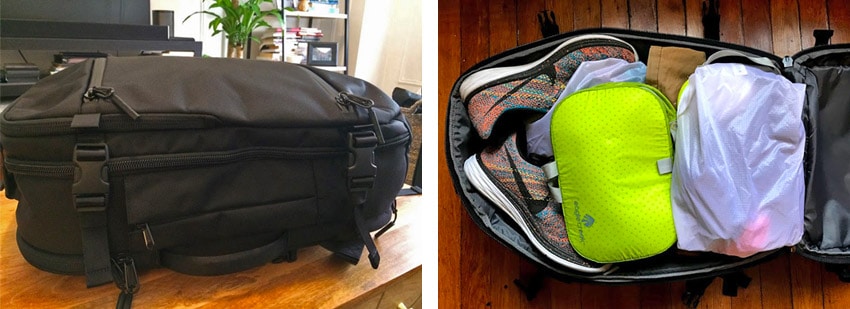
This style of backpack opens up like a traditional suitcase or a backpack you’d use at school. They are a cross between a suitcase and a backpack. This is the backpack style we recommend.
Benefits of Front-Loading Backpacks
- Easy access to all your stuff: You can simply unzip the zipper and get to whatever you need quickly. No need to totally unpack your bag when you need to get to something.
- Extra Pockets: Most bags of this style include a lot of extra pockets on the outside of the bag. This is nice because you will have easy access to the items that you use often.
- Easy to Organize: Add packing cubes to help make organizing your stuff much simpler.
Negatives of Front-Loading Backpacks
- Zippers can break: The zipper is one of the weakest points—higher-quality backpacks use heavy-duty zippers that can withstand more abuse, but zipper breakage is still a concern.
- Zippers Are Less Waterproof: Water can get in through the zipper. However, a lot of high-quality bags now come with waterproof zippers or you can buy a waterproof rain cover.
- Poorer Fit: Some people complain that these packs are too wide and less comfortable because it doesn’t hug your body as well as a hiking backpack.
- Poor Support System: Front-loaders are designed to be luggage so the support system tends to be less advanced than on hiking-style backpacks. This means the bag will become more uncomfortable on longer walks but you probably wear your backpack for super long lengths of time so this also isn’t a dealbreaker.
- NOTE: Many higher-end backpacks now have a proper support system that is much more comfortable than older models.
Top-Loading vs Front-Loading Backacpks: Which Is Better?
Both styles work but personally, I would choose a front-loading backpack. I used a top-loading backpack during my first trip to Europe but loading/unloading it was a pain. These days I only use a front-loading backpack.
Our favorite front-loading backpacks are the Osprey Farpoint, Osprey Porter, Tortuga Travel Backpack, and AER Travel Pack 3.
Read our guide on how to pack your travel backpack for tips on keeping all your stuff organized while traveling.
What Size Travel Backpack Should You Choose?
Important Words of Wisdom: The number one mistake new travelers make is bringing way too much stuff… and that starts with buying a huge backpack. A large bag enables you to carry more unneeded stuff. A smaller bag forces you to pack light. I’ve seen people with backpacks so large and heavy that they need help getting it on their back/standing up.
Remember, you’re going to be carrying this bag around for long periods of time. It is important that you can handle your bag by yourself. You’ll be throwing your bag up in overhead bins on planes and trains. You’ll be walking through narrow train aisles and busy streets. Your heavy bag will quickly become a huge burden and it will negatively impact your trip. You’re also bound to piss a bunch of people off when you accidentally smash them with your house-sized backpack. REMEMBER TO PACK LIGHT!
Backpack Sizes
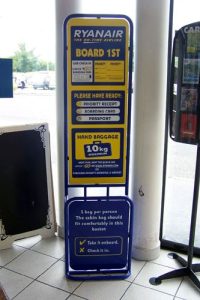
Backpacks are measured in liters and/or cubic inches. Most bags range from about 30L (1,800 cubic inches) all the way to 100L+ (6,000+ cubic inches).
I recommend a backpack around 40L-50L. Personally, I wouldn’t go over 65L, but some people like a bigger bag. You can always go smaller, but I wouldn’t recommend anything smaller than 35L — unless you’re into minimalist travel.
The length of your trip really doesn’t make much of a difference when it comes to choosing a backpack — so don’t buy a huge backpack because you’re going on a 6-month journey. You’ll carry the same amount of stuff for a 2-week trip as you will for a 6-month trip — you’ll just wash your clothes every few weeks.
Important Note For Budget Airlines: Budget airlines tend to be sticklers when it comes to baggage size and weight restrictions because they upcharge passengers for passengers who go over the limits.
That’s why I recommend sticking with a backpack that isn’t larger than 45L if you want to avoid baggage fees on Ryanair or other discount airlines.
It’s also nice to be able to skip the baggage claim. Most importantly, you never have to worry about the airlines losing your luggage — this can be absolutely disastrous on a backpacking trip.
Important Features Of A Good Travel Backpack
Here are a few things to keep in mind when evaluating a travel backpack. You can also check out The Savvy Backpacker’s guide to the best travel backpacks if you want my personal favorites.
Build Quality
A backpack is one of the things you don’t want to skimp on but you don’t want to spend a fortune on either. I recommend looking for a backpack in the $150-$250 price range.
Look for bags made by legit backpack companies like Osprey, Tortuga, Kelty, AER, Mountain Hardware, and Arc’teryx (there are a few other good brands). REI also sells their affordable “REI brand” backpacks that are good quality.
Comfortable Shoulder Straps
Nice shoulder straps will make your journey much more comfortable by distributing the pack’s weight over more of your shoulder.
Padded Hip Belts
A hip belt helps transfer the weight of your backpack from your shoulders to your hips. You want the hip belt to be comfortable and fit correctly. However, if you’re packing light then a hip belt isn’t quite as much of a concern.
Lightweight Backpack
A heavy backpack can weigh 6-10 lbs empty. Once you start adding clothes the weight of the pack climbs very quickly. I recommend looking for a lightweight pack that weighs about 3-5 lbs.
Quality Zippers
Higher-end backpacks have better zippers that can withstand more abuse than cheap zippers that might fail when stressed by overpacking. If possible, look for bags with waterproof zippers and zippers that can be locked.
Plenty of Pockets
A few outside pockets are really handy for storing stuff that you need to access quickly.
Ventilated Back
Backpacks sit right up against your back and the limited airflow causes a nice sweaty back. Some packs offer a ventilation bubble (or chimney) by using mesh to allow air circulation. This is more of a luxury than a requirement.
Color and Style
Travel backpacks come in multiple styles and colors. Personally, I prefer black or other muted colors since they’re less “flashy” than bright colors.
Daypacks
You won’t wear your large backpack as you’re sightseeing—that’s what the daypack is for. You use your daypack to carry around your day-to-day stuff like a small jacket, camera, snacks, etc. For more information about daypacks be sure to check out our guide to our favorite daypacks for Europe.
Read our recommended best travel backpacks for Europe once you’ve decided what style of bag you want.

No Funny Business
The Savvy Backpacker is reader-supported. That means when you buy products/services through links on the site, I may earn an affiliate commission—it doesn’t cost you anything extra and it helps support the site.
Thanks For Reading! — James
Questions? Learn more about our Strict Advertising Policy and How To Support Us.





